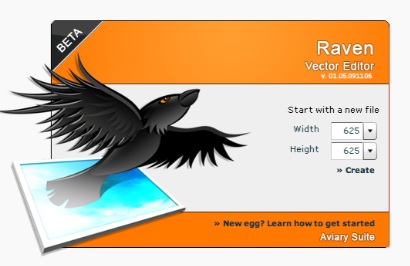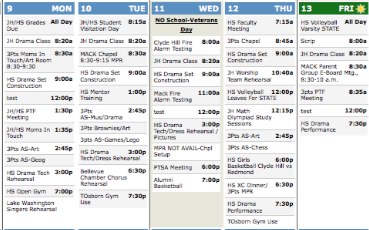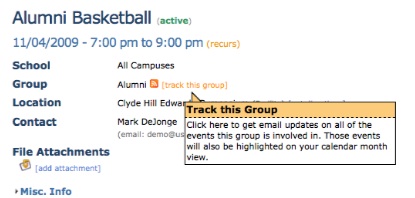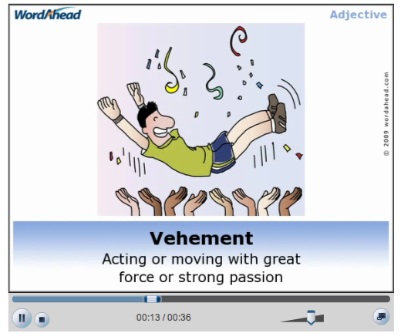Ning: Create A Social Network For Your School
 Ning is a social networking platform that allows any user to create their own social network in a relatively quick amount of time for free. In an educational context, there are countless of ways to integrate Ning into a school or school system.
Ning is a social networking platform that allows any user to create their own social network in a relatively quick amount of time for free. In an educational context, there are countless of ways to integrate Ning into a school or school system.
A Ning social network has a main page that serves as a hub for the entire network. From this hub users can fan out into blog posts submitted within the network, photos uploaded to the pages, a calendar section, and user-driven forums. Schools, teachers, and school districts can all create Ning social networking groups to further communication between administrators, parents, and students.
Each part of a school can utilize Ning in a different way. For instance, a school board can create a Ning community to keep parents up to date on district developments and conversations can be held within the Ning forum concerning proposed legislation that will affect local schools and improvements parents would like to see within the system as a whole.
While schools and school boards can leverage the power of social networking effectively, a lot of Ning’s real appeal for educators focuses on teachers. Whether they are on the site as members of an educator’s group or as owners of a network tailor-made to suit the needs of their students, teachers have a lot of options.
Teachers can create a social network focused on bringing together English or math teachers to network ideas and provide insight into course specific issues. A class specific Ning could feature test dates, a list of homework assignments and projects due, and links to internet resources that can provide homework help or additional insight into a classroom theme. Since a Ning features customizable privacy options, including the ability to make a Ning invitation-only or private, the safety of students accessing the material can be assured.
The value of social networking in education is only beginning to be fully realized, and Ning is on the cutting edge of specialty networks created to bring together a specific group of people – like educators and their students.
Educational Video Resource For Teachers: Teachers.tv
 Teachers.tv is a dynamic site featuring a wide variety of educational videos for several different grade levels. While the site is based in the United Kingdom, the topics touched upon will provide an excellent learning aid to students worldwide. However, the usefulness of the site is not limited to students, both teachers and parents can use teachers.tv to find new ways to present content to their students or pick up tips from numerous videos focusing on educational concepts.
Teachers.tv is a dynamic site featuring a wide variety of educational videos for several different grade levels. While the site is based in the United Kingdom, the topics touched upon will provide an excellent learning aid to students worldwide. However, the usefulness of the site is not limited to students, both teachers and parents can use teachers.tv to find new ways to present content to their students or pick up tips from numerous videos focusing on educational concepts.
Teachers.tv contains instructionals covering the basic school subjects such as English, math, and science but also incorporates several electives. Videos on art classes, religious studies, music, and foreign language are also readily available for viewing. The content is easily divided into sections based on learning needs; Early learning, primary education, and secondary education classes are all covered.
The videos on teachers.tv vary in length with some as short as three minutes. One example of a short video entails a visit to the home of Charles Dickens – the short running time allows for the program to be implemented into an English period without draining a large block of class time. On days when a longer project is desired, there are plenty of additional options to choose from.
On the teachers.tv web-site, instead of the format for each class or video being the same, each teacher or video instructor is able to inject their own personality and teaching techniques into their presentation. A prime example of this is John Heely who leads several videos on teachers.tv focusing on algebra and algebraic concepts. Heely’s videos have a quality that rivals public television productions while maintaining a definite focus on presenting math in a relatable manner.
Whether they do it through the course of home study or as part of the school day, students will have no trouble identifying favorite subjects and instructors on teachers.tv. On a slow day for learning at school or for additional help mastering a new concept, students will never be without new educational material after a visit to this site.
Free Online Graphic Design Suite For Students
Aviary features a wide variety of free tools to enhance the photo editing and graphic creation process. The tools and web-based programs available at Aviary.com can be easily used by students to create dynamic reports, educational fair projects, and slideshows for any subject.
Aviary features six core applications: Phoenix, Toucan, Peacock, Myna, Raven, and Falcon. Each program can stand alone as a creative tool, but some, such as Phoenix, can bring in elements from other applications to enhance projects.
Phoenix is an image editor that features a wide var iety of tools to enhance photographs or assist in the crafting of new images from a blank file. It contains many features that are found in software packages such as Adobe Photoshop and Corel Paint Shop Pro, such as the ability to edit in layers and add unique filters. For a student who wants to add a deep visual element to a school report or display photos, this program will work well. Text can be added to pictures to eliminate the need for a separate caption and the clone stamping feature can be utilized to remove unneeded elements from a photo.
iety of tools to enhance photographs or assist in the crafting of new images from a blank file. It contains many features that are found in software packages such as Adobe Photoshop and Corel Paint Shop Pro, such as the ability to edit in layers and add unique filters. For a student who wants to add a deep visual element to a school report or display photos, this program will work well. Text can be added to pictures to eliminate the need for a separate caption and the clone stamping feature can be utilized to remove unneeded elements from a photo.
Toucan, the color editor from Aviary.com is useful for a student who is planning a project where a coordinated color scheme will come in handy. The various controls can be toggled to bring up a palette of compatible colors which can then be saved to a clipboard.
Peacock is an effects editor which features a drag and drop interface. Starting with a central canvas, various patterns and filters can be dropped onto the workspace and connected with the canvas to create unique files that would be perfect as backgrounds or accent pieces in a science or social studies fair presentation or slideshow.
Myna is an exceedingly easy to use audio editor perfect for the student who is crafting a presentation that needs to utilize various sound bites or feature a prerecording of various elements. It could also be used to create a podcast promoting school related activities.
Aviary.com has an exceedingly well-developed vector editor in Raven.  Raven will provide any student with the ability to create stunning graphics for projects, reports, displays, and school related publications. Aviary features a wide variety of tutorials and guides to ensure that this program does not leave an eager learner behind. The diversity of Raven also means it can be a fitting alternative to the typical art class. With the various effects and dimensions that can be added to graphics, stunning art can be crafted which makes Raven perfect for encouraging creativity.
Raven will provide any student with the ability to create stunning graphics for projects, reports, displays, and school related publications. Aviary features a wide variety of tutorials and guides to ensure that this program does not leave an eager learner behind. The diversity of Raven also means it can be a fitting alternative to the typical art class. With the various effects and dimensions that can be added to graphics, stunning art can be crafted which makes Raven perfect for encouraging creativity.
Falcon Image Markup is the last Aviary program currently available. This is another photo editing program, but its focus is not so much enhancing photos as adding to them. A selection of arrows, straight lines, and pencil strokes can be placed on any photo or created file within Falcon. This could work out particularly well when wanting to give a school presentation a more personalized and dynamic feel.
With the wide range of web-based photo and art programs to be found at Aviary.com, school students and parents can concentrate more on creating and less on the prohibitive cost of many designer programs. It also has the advantage of going home with students since it is free and can be used through a browser. Most schools will not let students take home computers with Adobe Creative Suite, which costs about $400 per license for the student version.
Using Blogs In the Classroom
In blogs, educ ators are discovering a new tool for engaging students who live in a world increasingly dominated by technology. By incorporating blogging into the school environment, educators can capitalize on the social media explosion, turning a potentially isolating medium into a window of discovery and self-expression as well as a bridge to the broader learning community.
ators are discovering a new tool for engaging students who live in a world increasingly dominated by technology. By incorporating blogging into the school environment, educators can capitalize on the social media explosion, turning a potentially isolating medium into a window of discovery and self-expression as well as a bridge to the broader learning community.
Naturally when confronted with change there will be some resistance among educators to adopt and embrace this new medium, just as the advent of the internet posed a classroom challenge. Yet the reality is that today’s students are already immersed in social media and schools can either seize this new opportunity or play the proverbial ostrich. Ideally educators will lead and not lag behind at this transformative moment by encouraging youth to utilize this amazing technology as more than just an entertaining diversion.
Subscription services like EdublogsCampus, based on the WordPress platform, provide the technical framework and support to get schools started. Luckily for educators, tech-savvy students make excellent navigators, and engaging their help fosters a spirit of cooperation and sense of mastery. Classroom blogs can serve any number of purposes, as student newspaper, sharing information, writing practice, homework submission and testing forum, tracking tool for parents, online calendar, and so on. Security is of course a key concern, and web-hosting services offer custom access levels to assure student safety and confidentiality.
Blogging is a natural for facilitating extension of lessons, replacing old norms of information regurgitation and bringing lessons to life through interactivity, journaling and use of multi-media. Blogging provides the ideal avenue for sharing the learning experience, furnishing a vehicle for budding photographers, poets and artists to share their talent in a non-threatening forum. Blogs offer a creative outlet and give students a voice in what may be their only outlet or experience of being heard.
Beginning at the earliest school level, introducing blogs into the classroom fosters an environment of cooperation and recognition of the talents of each individual. At the same time, students are learning and applying technical and communication skills that they will take into the workplace, fulfilling the ideal of learning as an ongoing process and lifelong journey.
Using Facebook In Education
While the thought of Facebook as a learni ng tool might elicit some skepticism, savvy students are discovering uses for the ubiquitous social media site beyond trading gossip and playing games. In fact, Facebook offers an array of applications geared to student needs. Web tools like Do Research 4 Me, Wikiseek Search, and JSTOR Search take the tedium and legwork out of researching term papers. Applications are available for homework assistance, forming virtual study groups, finding the best deals on textbooks, and of course Rate My Professors.
ng tool might elicit some skepticism, savvy students are discovering uses for the ubiquitous social media site beyond trading gossip and playing games. In fact, Facebook offers an array of applications geared to student needs. Web tools like Do Research 4 Me, Wikiseek Search, and JSTOR Search take the tedium and legwork out of researching term papers. Applications are available for homework assistance, forming virtual study groups, finding the best deals on textbooks, and of course Rate My Professors.
Teachers are getting aboard the Facebook bandwagon and establishing accounts of their own, finding it an effective bridge beyond the classroom, freeing them of late night calls from frantic pupils and parents seeking last-minute information on the week’s spelling words or a project due the next day. Facebook also fills a crucial gap as a forum for providing homework guidance and lesson-extending tutorials that may be lacking for latch-key kids. When Facebook is integrated into the learning environment, it helps create a safe online community that parents can feel confident about.
Facebook even provides opportunities for parent involvement through online interaction in a platform that is flexible enough to fit even the busiest schedule. As a conduit for communication it helps build teacher-student-parent relationships beyond the constraints of classroom walls and school schedules, and it does so in a way that is non-intrusive and non-threatening. A parent who dreads the idea of attending a parent-teacher conference after a long day of work and putting a meal on the family table is likely to relish being able to conduct a meeting at their fingertips. In this manner, Facebook creates new opportunities for dialogue between teachers, parents and students, spanning generational, geographic, and cultural distances. When students see that teachers are willing to “speak their language” and use the tools of their generation, amazing connections can occur.
Do you think Facebook has a role in education? Leave your comments below.
Software is increasingly changing the way we perceive common tools of everyday life such as books and calendars. Before a computer became common in every home and classroom, we were accustomed to paper based systems for activities such as reading or finding out what events are happening at school. Just as the Kindle for the iPod has altered the book industry by enabling almost instant access to millions of books, Intand’s school calendar software, Tandem for Schools, has transformed the way school administrators, teachers, students, and parents interact with the school calendar. And like other tools in society that have been replaced by software, school calendar software has many advantages.
way we perceive common tools of everyday life such as books and calendars. Before a computer became common in every home and classroom, we were accustomed to paper based systems for activities such as reading or finding out what events are happening at school. Just as the Kindle for the iPod has altered the book industry by enabling almost instant access to millions of books, Intand’s school calendar software, Tandem for Schools, has transformed the way school administrators, teachers, students, and parents interact with the school calendar. And like other tools in society that have been replaced by software, school calendar software has many advantages.
Eliminate paper-based systems
Paper based calendars are not very efficient by today’s standards. Traditionally school districts may have sent out a paper annual calendar to all students families. These calendars would be pretty empty except for school holidays. Many schools would also send out a monthly newsletter or flier home with students that described upcoming events. This would often require hundreds or thousands of pages of paper to be printed out, and often the information was out of date as soon as it was received. School calendar software like Tandem for Schools allows schools to publish events to an online calendar that is instantly accessible to everyone who goes to the calendar’s web page on their internet browser. This can also save lots of paper and ink.
Increased event awareness
Another advantage of school calendar software is that it can raise awareness of what is going on at the school. While a paper calendar that you stick to your fridge can be a reference for what events are happening at the school, a calendar that sits on a web page can be far more informative. An online school calendar can show every event that is going on at the school with detailed information about the place, time, directions, contacts, etc. Instead of a sheet of paper that can be lost in transit or misplaced, Tandem for Schools is always accessible from anywhere you have access to the internet. Students and parents always know where to go to find out what is happening at the school, which encourages school participation.
Improved School Facilities Management Process
Before school calendar software solutions like Tandem, managing and scheduling use of school facilities could be a major project. The school administrator may have to account for a large number of school groups and scheduling conflicts could be common. Requesting use of a facility could take days or weeks, with the back and forth phone tag or email tag. Tandem for Schools makes this facilities management easy with automatic conflict detection, and a simple and streamlined facilities request and approval process.
Real Time Information Updates
If there is a change in the time of an event, or a school cancellation due to inclement weather, Tandem for Schools can display this change on the main calendar almost instantly after a school administrator makes the change. In contrast a paper calendar takes a very long time to update and is useless for school cancellations or same day changes. Being able to check the status of an event or school cancellation online is very convenient to parents and can prevent lots of phone calls to the office. With Tandem for Schools, parents can also sign up for automatic email updates when the status changes for an event.
There are many other benefits of school calendar software compared to paper-based calendars. If you would like to learn more, sign up for a free demonstration of Tandem for Schools.
Tandem Tidings: Our New Newsletter
Intand will be sending out a monthly newsletter, Tandem Tidings, to Tandem administrators with tips, news, and helpful information about using Tandem’s school calendar software. Here are a few snippets from the newsletter:
Message From Intand’s President
It seems like just yesterday that we were starting up Intand in Bellevue, Washington with the hopes of getting 10-15 school districts on board. Over the past 5 years, we have grown much larger than 10-15 districts! Currently, Tandem is being used by districts in 44 states! Along the way, we have been able to collect a fantastic team at Intand who are truly dedicated to your school and district. We hope you have enjoyed using Tandem to connect with your parents and organize your school as much as we have enjoyed serving you. If you aren’t already, please consider using Tandem district-wide, for all of your schools and all of your events. In this past year, we have seen a significant difference in the districts who are using Tandem district-wide as opposed to using it only at 1-2 schools. Talk to your support representative about how to get started on this; it’s easier than you think! In all of this, we hope to be making your jobs easier, so you can spend time on what is important this season. Enjoy your Thanksgiving and Christmas and all the joyous holidays of the season!
Warmly,
Bryan Otis
Upcoming Webinars
Ongoing training is very important. We know that changes occur in your staff and faculty, people come and go and we are here to get those new and infrequent users up to speed. In addition to our customized paid training sessions, we offer a free weekly webinar called the Tandem Genius Series. The weekly topics are posted on our website, www.intand.com in the Support section and you can pre-register for the sessions that you’d like to learn more about.
Nov. 18th Requesting Transportation & Adding a Trip (Tandem Plus Users)
Nov. 25 Schedules, make them your friend!
Tandem Referral Program
Our success is attributed in large part to users like yourself. Many of you have spread the word and shared your Tandem experience with other schools and districts.
As a Thank You we are offering you an extended subscription. From now until the end of the year, if you refer a school or district and they sign up for a Tandem Standard or Tandem Plus subscription, we will add 1 month to the end of your subscription free of charge! There is no limit—so if you refer 5 schools that sign up, you will receive an additional 5 months to your subscription for FREE. Simply send an email to support@intand.com and tell us who you have referred so your school will get the credit.
Share Your Story
Would you like to share your success story and gain global recognition for your school or district? We are working on new case studies, or success stories as we are calling them, to show the world how Tandem for Schools has made a difference for you, your school, and your community. Have you:
- Established consistency and a fair process for managing facilities?
- Reduced scheduling conflicts?
- Eliminated paper-based systems?
- Increased event awareness?
- Improved communication between faculty and staff?
- Become more efficient?
- Improved your image and made a stronger community?
This would be a great opportunity for your journalism class or club to conduct interviews off and on camera! If you don’t have a journalism group, no problem! A member from the Tandem support team will conduct the brief interview and get the story ready for publishing on our website. Just let us know if you are interested and we will guide you through the short and simple process from start to finish.
E-Readers in Education
 Within a relatively short time frame, Amazon.com launched the Kindle followed by Kindle 2 and Sony launched its latest electronic reader. On the heels of these two revolutionary e-readers, Barnes & Noble will be releasing Nook, their version of an electronic book. Unlike e-readers of the past, these new models offer many features that have school systems and some education advocates pondering whether Kindles or other e-readers should be incorporated into the classroom either in place of or as a supplement to traditional textbooks.
Within a relatively short time frame, Amazon.com launched the Kindle followed by Kindle 2 and Sony launched its latest electronic reader. On the heels of these two revolutionary e-readers, Barnes & Noble will be releasing Nook, their version of an electronic book. Unlike e-readers of the past, these new models offer many features that have school systems and some education advocates pondering whether Kindles or other e-readers should be incorporated into the classroom either in place of or as a supplement to traditional textbooks.
E-Readers offer numerous benefits when incorporated into a classroom setting or an entire educational system. These benefits range from economics to quality of learning and are far reaching enough to demand an audience.
In terms of finances, a standard e-reader will run between $200-300 at current prices. In a public school system, students are typically issued at least six textbooks (math, grammar, literature, science, social studies, an elective, and the potential seventh alternate – health) per year. At an average cost of $75-$100 per new textbook, the e-Reader (even after books were purchased and loaded) would be a comparable price and certainly no more expensive.
A major benefit of using an e-reader in the classroom shines through when one considers the publication date of textbooks. In many schools most textbooks are used for several years in a row. As physical books they cannot be updated and are used even after they are no longer current or are out of date altogether. If e-readers were utilized the books could be updated electronically as new editions were available and cutting edge scientific discoveries or important current events could be studied through publisher provided enhancements.
Another advantage shows up under the heading of note taking. In primary education, students are typically not allowed to write in books or highlight within the text and instead rely on taking pen and paper notes referencing particular passages to study or vocabulary words to look up. With an e-reader, pen and paper notes can become obsolete as a student can digitally underline or highlight important passages and use marginal notations to add supplemental information provided during lectures. Since personalized notes can be stored in a “cloud” provided by the e-Reader manufacturer, if a device malfunctioned this material could be restored. A student could rest assured they would maintain all of their notes from the beginning of a school course to the end within their e-textbook.
E-Readers take nothing from the current educational system but stand to add a lot to the learning experience. In terms of portability, value, and capability, e-Readers could be the next necessity in the classroom and the educational system at large.
Photo credit http://www.flickr.com/photos/ivyfield/ / CC BY 2.0
1. Easily access the calendar from any web browser
Tandem for Schools is a web based online calendar so parents can access the calendar by simply going to the school’s unique URL. This enables parents to be able to access the school’s calendar from any location even if it’s not their own computer. You can also access it from mobile devices with an internet connections like an iPhone or Blackberry.
2. Filter events
Schools that use Tandem for Schools often add all events for the entire school on the main school calendar. If you are a parent that is only interested in specific groups that your child belongs to such as varsity soccer or drama, you can easily filter the view to show only these events.
3. Search events
If there is a specific event that you want to find more information on Tandem has a useful search feature. Say you wanted to see what concerts were coming up. Just type in “concert” in the search box and Tandem will show all the concerts.
4. Obtain detailed information about an event
By clicking on an event on the calendar you can see a more detailed view with information like participants, contacts, supervisors, miscellaneous info, and trip information if applicable.
5. Export individual events to your personal calendar
From the individual event view you can export the event into your personal calendar such as Outlook, iCal, Google Calendar, or Cozi.
6. Synchronize your personal calendar with the school events you are interested in
Tandem allows you to sync with your personal calendar like Outlook, iCal, Google Calendar, and Cozi. It can automatically post events that you have filtered on your Tandem Calendar to your personal calendar.
6. Keep track of groups you are  interested in
interested in
Another useful feature of Tandem for Schools is the group tracking feature. If you are logged in and view a specific event, you can click on “track this group”. You will receive email updates of events that this group is involved in, including any changes that are made.
7. Get directions to an event
Simply click on the “get directions” link on the event detail view and Tandem will redirect you to Google Maps with the event destination already filled in.
8. Set a reminder for an event
Busy parents can have a hard time remembering all the events that their children are involved in. Tandem for Schools can send you an email to remind you of a specific event. Simply log in, click on an event, and click “set reminder”. You can specify the time that you want the reminder sent, such as 2 hours before the event, and a notification will automatically be sent to your email.
If you are a parent who would like their school calendar to do more, you can request that your school consider Tandem for Schools here.
WordAhead: Vocabulary Video Site For Students
WordAhead is a vocabulary word centered website sure to be of help to any student who wants to do well on state administered standardized tests, the SAT, or ACT as well as increase their personal vocabulary. The WordAhead premise is a simple one. The site provides a video featuring each vocabulary word on the site and its definition. A casual user can utilize the site very passively by signing up for a word-a-day email, but there are also several unique features at WordAhead to allow a more active learner to get ahead.
website sure to be of help to any student who wants to do well on state administered standardized tests, the SAT, or ACT as well as increase their personal vocabulary. The WordAhead premise is a simple one. The site provides a video featuring each vocabulary word on the site and its definition. A casual user can utilize the site very passively by signing up for a word-a-day email, but there are also several unique features at WordAhead to allow a more active learner to get ahead.
At Wordahead, scientific studies emphasizing the importance of repetition as a learning device have been taken fully into account. During the videos presented for almost all vocabulary words, the actual word is repeated several times. A video for a word such as “adjourn” will start with the word being presented with its full definition while the information is also read aloud. Then, a still cartoon image is shown to illustrate the meaning of the word while several sentences are read presenting the word in context. In many of these sentences the word will be used at least twice and typically in multiple tenses (i.e. present and past tense).
A multitude of vocabulary words and definitions are presented on the site and many students will likely find that they are already familiar with certain words and do not need to thumb through them on every visit to the site. In this instance, a free Wordahead account can be created which will allow any user to create a customized word list featuring as many or as few definitions as needed.
When a customized word list is toggled from the drop down menu at WordAhead, the videos will automatically begin to play in the browser window. This feature can also be used by a teacher to create a word list centered around a current lesson plan or as a study aid for an upcoming test. Any vocabulary list can be shared with other WordAhead members through the use of a class specific name like “Mrs. White English I, Test 3 Word List.”
These customization features and the targeted word repetition, featuring learning through hearing a vocabulary word in context and seeing an illustration while reading the word’s definition, makes WordAhead a unique educational resource.
This post is brought to you by Tandem Online School Calendar. Try the free annual school calendar here.